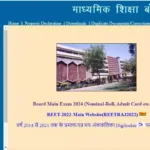Heard of the government offering a helping hand to car manufacturers? Well, that’s exactly what the Production Linked Incentive (PLI) Scheme for Automobile and Auto Component Industry is all about. Launched in September 2021, this scheme aims to be a game-changer for India’s auto sector, and here’s why it’s got everyone in the fast lane.
Gearing Up for Advanced Auto Tech (AAT): The Focus Area
Forget your run-of-the-mill cars! The PLI scheme isn’t here to just boost production numbers. Its main focus is on Advanced Automotive Technology (AAT) products. Think electric vehicles (EVs), hydrogen fuel cell vehicles, and other futuristic options. The idea is to incentivize companies to manufacture these AAT products in India, making us a hub for cutting-edge auto tech.
Why this focus? The answer is simple: to bridge the gap. Currently, India relies heavily on imports for AAT components. The PLI scheme aims to change that by building a strong domestic supply chain for these advanced technologies. This not only reduces dependence on foreign imports but also positions India as a potential exporter of AAT vehicles in the future.
Cashing In on the Incentives: How it Works
The PLI scheme functions like a pat on the back for companies that invest in and manufacture AAT products in India. Here’s the breakdown:
- Financial Boost: Participating companies get a percentage of the incremental sales value of AAT vehicles they manufacture in India. This essentially means the more AAT vehicles they produce and sell here, the bigger the incentive they receive from the government.
- Two Flavors, One Goal: The scheme is divided into two categories: Champion OEM (Original Equipment Manufacturer) and Component Champion. Carmakers like Maruti Suzuki or Tata Motors fall under the Champion OEM category, while companies that manufacture parts specifically for AAT vehicles come under the Component Champion bracket. Both categories benefit from financial incentives, encouraging investment across the entire auto manufacturing ecosystem.
There’s a catch, though. Companies need to meet specific performance criteria related to sales growth and investment to qualify for the incentives. It’s a performance-based reward system, ensuring that only those who contribute meaningfully to the AAT manufacturing push reap the benefits.
Steering Towards a Brighter Future: The Expected Benefits
The PLI scheme isn’t just about fancy cars. Here are some of the long-term benefits it’s expected to bring:
- Making India an AAT Hub: By incentivizing domestic production, India can become a significant player in the global AAT market. This not only attracts foreign investment but also creates a pool of skilled workers in the AAT sector.
- Boosting Employment: As the auto industry expands with a focus on AAT, new job opportunities will be created across various segments, from manufacturing to research and development. This will have a positive impact on the overall economy.
- A Greener Ride: The scheme’s focus on EVs and other clean technologies will contribute to India’s plans for a more sustainable future. With increased production of EVs, air pollution is expected to decrease, leading to a cleaner environment.
- Technological Leap: The PLI scheme encourages technology transfer and innovation in the auto sector. This will help Indian companies develop their own AAT expertise, making them more competitive in the global market.
Hitting the Road Ahead: Challenges and the Way Forward
The PLI scheme is a promising initiative, but there are challenges to consider. Ensuring a skilled workforce for AAT manufacturing and creating a robust charging infrastructure for EVs are crucial aspects that need to be addressed alongside the scheme’s implementation.
Overall, the PLI Scheme for Automobile and Auto Component Industry has the potential to be a transformative force for India’s auto sector. By fostering innovation, attracting investments, and creating jobs, it can pave the way for a future where India is at the forefront of AAT development. So, buckle up, because the Indian auto industry is about to take a thrilling ride!




